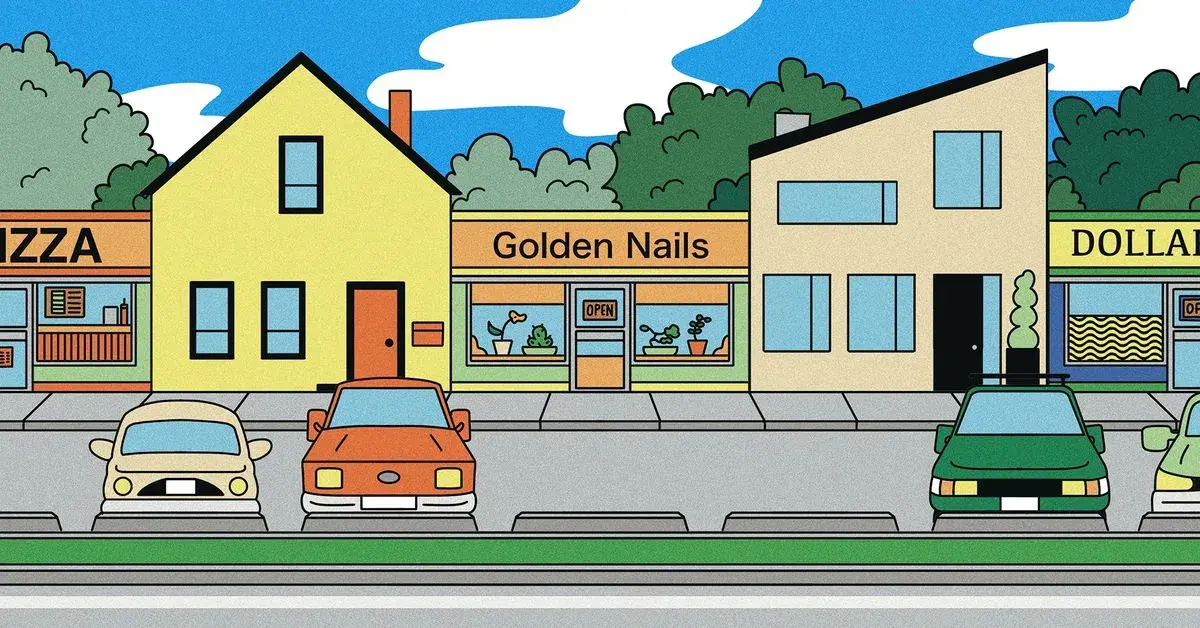
Except that they don’t have the necessary plumbing infrastructure to make that feasible. It’d be better and possibly cheaper to tear down entirely and build something actually designed for living.

They would make easy retrofits into college campuses, or any kind of campus really.

A lot of these projects seem to require at least a partial rebuild of the site. So, you might tear down an anchor store and remove parking to add in apartments. Then, the remaining commercial real estate becomes more valuable since it can also be supported by residents.

Still better than living in a tent under a bridge, like an embarrassing amount of the us population

Well, depends. If the tent camp is near services and transit, it can be better than a shelter that’s impossible to get food near.
Maybe you’ve never been homeless, but I have.

We must have had very different homeless experiences. I would have gladly taken a micro apartment over a tent any day. Any. Day. It could have been in the middle of a desert for all I care.
A door that locks, a bathroom, a roof, and water easily accessible? Yeah, that is a million times better than the constant fear and animalistic mindset that comes with a lack of basic resources.

Keep the food court and turn one of the anchor stores into one-stop services building.
Never mind, luxury condos make more money…

Where I live there aren’t a lot of places without food and transit near

And no windows in most of the storefronts. It is not impossible to convert them, but it is not particularly economical in most cases.

What if you added a shit-ton of planters and skylights/lights in the huge main hallways (assuming skylights aren’t there already, which they are in a lot of cases), and put windows inward toward your year-round community gardens? The inward-facing walls tend to be glass, so would need to be replaced anyway, and those hallways and congregation spaces are more than wide enough for abundant edible greenery if there aren’t sales kiosks and junk everywhere. You could make a really inviting view entirely indoors.
Retrofitting the plumbing might be a bit of a problem unless you made everything high efficiency, and just built up the floor a bit, which I think could be a fairly minimal expense by going down the main hallways to existing facilities, with shared plumbing between two units/stores like a duplex. (those cement floors suck anyway, so you’d want it built up at least in the units). That makes it easily accessible for fixing. Or a lot of places have back hallways, you could run exposed plumbing through those and run directly into each unit.
Keep some of the kitchens in the food court running, open some markets/maker spaces or create hangout/childcare options in the big shops that can’t be converted to housing, and you can employ people and give them access to quality resources with whatever access issues they may have. Plus then you could rip out 90% of the parking lot and plant trees or build more housing or something. That sounds pretty economically sound to me, just not up front. And not profitable for anyone who would spend on it.

Your idea is so good that it was actually done 8 years ago and turned out beautifully. https://www.businessinsider.com/americas-first-shopping-mall-is-now-micro-apartments-2016-10

That place has the advantage of having rear windows since it was built before electric lighting. Most modern malls have windows only on the store front open to the interior.

This. There were 2 malls near me where they spent nearly 10 years total trying different designs on paper trying to find a way for it to be cheaper to retrofit into housing, or anything useful really, and eventually they just tore both down and built new smaller structures on the footprint.

How about we stop letting people and corporations gobble up all the existing housing for their endless speculative bubbles?

For sure. I agree with the idea of doing this provided that private companies assume all the risk and work to overcome all of the obstacles to doing this but at the same time we have to remember why we have to do this in the first place. Speculative investment should never have been allowed into the housing market in the first place and that’s why we’re here. That’s why nobody can afford homes. That’s why nobody can afford rent.

How are they supposed to punish homeless people, then?

They can’t get rid of the Hotdog on Stick smell, so it will torment all the occupants of the new housing.

Or parks, or studios or community spaces or band practice rooms, art galleries …

“Concert venue” and band practice space is something a mall would actually work as.

It makes me chuckle how, in a country where we’re spending a trillion and a half on war every year, if not more, half of the comments are like “but it costs too much”.

“cost to much” compared to building new housing

That’s a caveat I can get behind.

No can do. That would drive prices down and that hurts our economy 🥸

I don’t think it hurts the economy since moving people to producive areas increases productiviy.
It does hurt homeowners, who have managed to capture the regulatory regime by pressuring their city government into passing and maintaining zoning laws.

I meant it sarkastically, hence the 🥸

I wish it would be possible, but the amount of work to convert would make it more difficult than not. Honestly, I would love to see more community centers made from the abandoned malls at least as a starting point, and then go from there.

I wish we could just remove the stress of living. Nobody should have to feel stress over meeting basic needs

no you want to turn the into prisons.
🤖 I’m a bot that provides automatic summaries for articles:
Click here to see the summary
A report last fall from Enterprise Community Partners, a national nonprofit focused on increasing housing supply, estimated that strip mall conversions could create more than 700,000 new homes across the United States.
The Biden administration is also excited about the possibility of converting more vacant strip malls into housing, and in October, released new federal guidance to help leaders and developers navigate the unfortunately complex financing process.
By 2021, new apartments were ready to rent on the property, and today the Woburn Village has 350 rental units, amenities like a fitness center and a swimming pool, and retailers that include Sephora and Panera.
“We just looked at the 10 percent that were most well-suited for conversion based on factors like parcel size, proximity to transit, conditions, and vacancy, but it could be much more than that if you changed some of those assumptions,” said Ahmad Abu-Khalaf, a senior research analyst who wrote the Enterprise report.
Like the Metropolitan Area Planning Council, Abu-Khalaf sees rewriting local zoning laws as the biggest barrier to conversions, which is why California authorizing retrofits statewide two years ago was such a big deal.
This summer, a California state agency that oversees building code regulations went a step further and voted to make it even easier for developers to convert commercial property into new housing.
Saved 83% of original text.

Nice. Do abandoned parking lots next.


